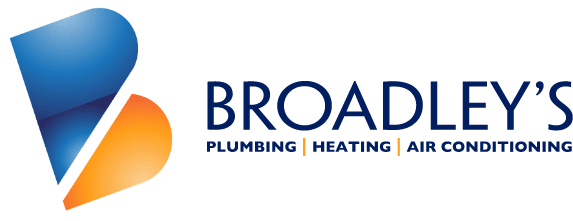A Buyer’s Guide to New HVAC Refrigerant Changes

Upgrading your HVAC system is a big decision, whether your old unit is on its last leg or you’re looking for better efficiency and comfort. As a savvy homeowner, you’re likely researching features that impact performance, reliability, and energy savings.
One key factor you might notice during your search is the shift in refrigerant technology. Many newer models highlight the use of next-generation refrigerants, which may leave you wondering how this affects your purchase.
Broadley’s Plumbing, Heating & Air Conditioning is here to help explain! The HVAC industry is evolving, and understanding these refrigerant changes can help you make a smart, informed choice. With the right system installed at your Ocean City, home, you’ll enjoy improved efficiency, environmental benefits, and long-term cost savings.
What Refrigerant Change?
The Environmental Protection Agency (EPA) has set a goal to reduce hydrofluorocarbon (HFC) production and consumption by 85% by 2036. As part of this effort, R-410A, the dominant refrigerant in residential and commercial air conditioning systems—known for its high global warming potential (GWP)—is being phased out to minimize environmental impact.
This phaseout has reached a critical stage. As of January 1, 2025, all newly manufactured HVAC systems must use A2L refrigerants designed for improved efficiency and sustainability. Any R-410A Systems manufactured before this cutoff date may be sold until January 1, 2026, to allow existing inventory to be phased out.
These A2L refrigerants, such as R-32 and R-454B, have a lower GWP. They offer improved environmental performance while maintaining effective cooling and heating capabilities.
Pros and Cons of the Refrigerant Transition
When comparing the available inventory of HVAC products using R-410A or a next-generation refrigerant, here are a few pros and cons to consider.
Pros:
- Lower Environmental Impact: R-32 and R-454B have significantly lower GWP than R-410A, meaning they contribute less to climate change.
- Improved Energy Efficiency: New refrigerants offer better thermal properties, increasing efficiency in cooling and heating systems.
- Compliance With Regulations: By adopting a system with an approved refrigerant, homeowners and businesses ensure compliance with new EPA regulations, avoiding potential restrictions or added costs in the future.
- Long-Term Cost Savings: While new systems may have slightly higher upfront costs, increased efficiency can lead to lower energy bills over time.
Cons:
- Transition Costs: Industry experts estimate that newer refrigerant systems will be 8-10% more expensive due to new manufacturing designs and the additional investments in updated tools and training for HVAC technicians needed for the new A2L refrigerants.
- Limited Decision Window: With the sell-through date for existing R-410A equipment marked for the end of the year, homeowners have only a few months to make the decision between going with a tried and tested refrigerant or the newest in green technology.
- Limited Availability of R-410A: While R-410A refrigerant is still readily available, its existing stock will eventually decline, leading to increased prices and potential shortages for repairs on older systems.
How These Changes Affect Buying Decisions
If you’re planning to buy a new HVAC system, it’s crucial to consider models that are compatible with the latest refrigerants, not just the standard we’re used to. R-32 and R-454B systems are being widely introduced by manufacturers and will soon become the new standard.
Here’s what you should consider:
- Future-Proofing: Purchasing an HVAC system that uses R-32 or R-454B ensures your unit remains serviceable for years to come. Opting for an R-410A system now could mean dealing with higher refrigerant costs down the road.
- Energy Efficiency Ratings: Check new units’ SEER2 (Seasonal Energy Efficiency Ratio 2) and HSPF (Heating Seasonal Performance Factor) ratings. Many systems using newer refrigerants are designed for higher efficiency.
- Installation Requirements: Some systems may require different components, refrigerant lines, or technician training. Ensure your HVAC contractor is knowledgeable about the latest refrigerants and installation requirements.
- Federal Tax Credits: HVAC systems using new, eco-friendly refrigerants may qualify for federal tax credits, helping homeowners save on energy-efficient upgrades while reducing environmental impact.
For Homeowners With Existing R-410A Systems
If you currently have an R-410A system, you don’t need to replace it unless it’s nearing the end of its lifespan.
If that’s the case, keep these factors in mind:
- Maintenance and Repairs: Since R-410A production is decreasing as part of the phase-out, as its stock diminishes over time, its cost will rise. It’s wise to stay on top of maintenance to avoid refrigerant leaks and ensure your system remains in optimal condition.
- Plan for Replacement: If your system is older (10+ years), consider replacing it sooner rather than later to take advantage of newer technology, efficiency improvements, and rebates available for environmentally friendly upgrades.
Contact Broadley’s for HVAC Installation
The HVAC refrigerant transition is a crucial development for homeowners looking to upgrade their heating and cooling systems. While the shift away from R-410A may come with some upfront costs, the long-term benefits of lower environmental impact, better efficiency, and regulatory compliance make it a worthwhile investment.
If you’re in the market for a new HVAC system, prioritize units that use R-32 or R-454B to ensure longevity and cost savings. If you’re currently using an R-410A system, proper maintenance and planning will help you navigate the transition smoothly.
Consulting with a trusted HVAC professional at Broadley’s Plumbing, Heating & Air Conditioning is the best way to determine the right course of action for your Ocean City, home. Whether you’re upgrading now or preparing for future changes, staying informed will help you make the best decision for your comfort, budget, and the environment.
